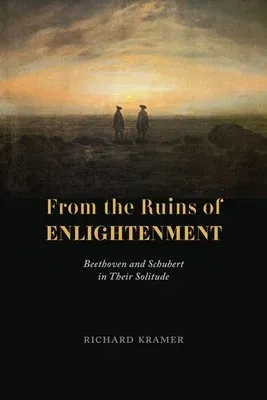Richard Kramer follows the work of Beethoven and Schubert from 1815
through to the final months of their lives, when each were increasingly
absorbed in iconic projects that would soon enough inspire notions of
"late style."
Here is Vienna, hosting a congress in 1815 that would redraw national
boundaries and reconfigure the European community for a full century. A
snapshot captures two of its citizens, each seemingly oblivious to this
momentous political environment: Franz Schubert, not yet twenty years
old and in the midst of his most prolific year--some 140 songs, four
operas, and much else; and Ludwig van Beethoven, struggling through a
midlife crisis that would yield the song cycle An die ferne Geliebte,
two strikingly original cello sonatas, and the two formidable sonatas
for the "Hammerklavier," opp. 101 and 106. In Richard Kramer's
compelling reading, each seemed to be composing "against"--Beethoven,
against the Enlightenment; Schubert, against the looming presence of the
older composer even as his own musical imagination took full flight.
From the Ruins of Enlightenment begins in 1815, with the discovery of
two unique projects: Schubert's settings of the poems of Ludwig Hölty in
a fragmentary cycle and Beethoven's engagement with a half dozen poems
by Johann Gottfried Herder. From there, Kramer unearths previously
undetected resonances and associations, illuminating the two composers
in their "lonely and singular journeys" through the "rich solitude of
their music."

